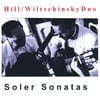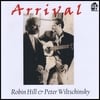'Xodo da Baiana' by Dilermando Reis is another piece on Virtuoso, track 19, with a truly South American feel.
Dilermando Reis, (1916-1977) was a Brazilian guitarist born in Sao Paulo. He studied the guitar from an early age with his father, Francisco Reis, and by the age of 15, Dilermando was already known as the best guitarist in Sao Paulo.
By 1933 Reis had moved to Rio de Janeiro, where he lived for most of his life, and was prolific in recording over 40 albums.
He enjoyed many kinds of music and recorded pieces from composers as diverse as Bach, Barrios, Tarrega and Gnatalli, among others.
However his first love was for the traditional Brazilian style of music, featuring mainly waltzes and choros full of melodic invention, syncopated rhythms and pleasing modulations.
He was equally prolific as a composer with over 100 of his own compositions, many of which have become standards of Brazilian guitar playing.
'Xodo da Baiana' is typical of his style.
The use of pizzicato in the opening section is highly effective and overall the piece combines melodic and rhythmic invention.
Reviews
'As always, it was sheer pleasure to observe Robin Hill's remarkable fluent technique: everything looks easy when he plays it.' Colin Cooper- Classical Guitar Magazine -----
'Wonderful for their (Hill & Wiltschinsky) precision, touch and clarity of sound... refined virtuosity, the achievement of a long interpretive process.' Il Giornale D'Italia (Rome) -----
'I loved your CD and thought your technique and performance were fabulous...' Rick Wakeman
Subscribe to:
Post Comments (Atom)


















3 comments:
Hi Anna,
This is obviously something that I don't know about the guitar. You used the term pizzicato, which means plucked string. How is this technique different to normal guitar technique (which I assume, plucks the string). At least with the violin, you've got arco (bowed) as the normal playing technique, so pizzicato is obvious...
Hi Ben,
Thanks for the question!
Pizzicato on the guitar is an effect achieved by placing the side of the right hand on the bridge of the guitar, and then plucking the strings with the thumb, which in effect mutes the strings.
If you listen to the opening of Xodo da Baiana you can clearly hear the muted sound in the first couple of bars, then Robin removes the palm of his hand from the bridge to return to the more conventional guitar sound.
In some ways it's an imitation of pizzicato on the violin.
Hope that helped!
This simply matchless message ;)
Post a Comment